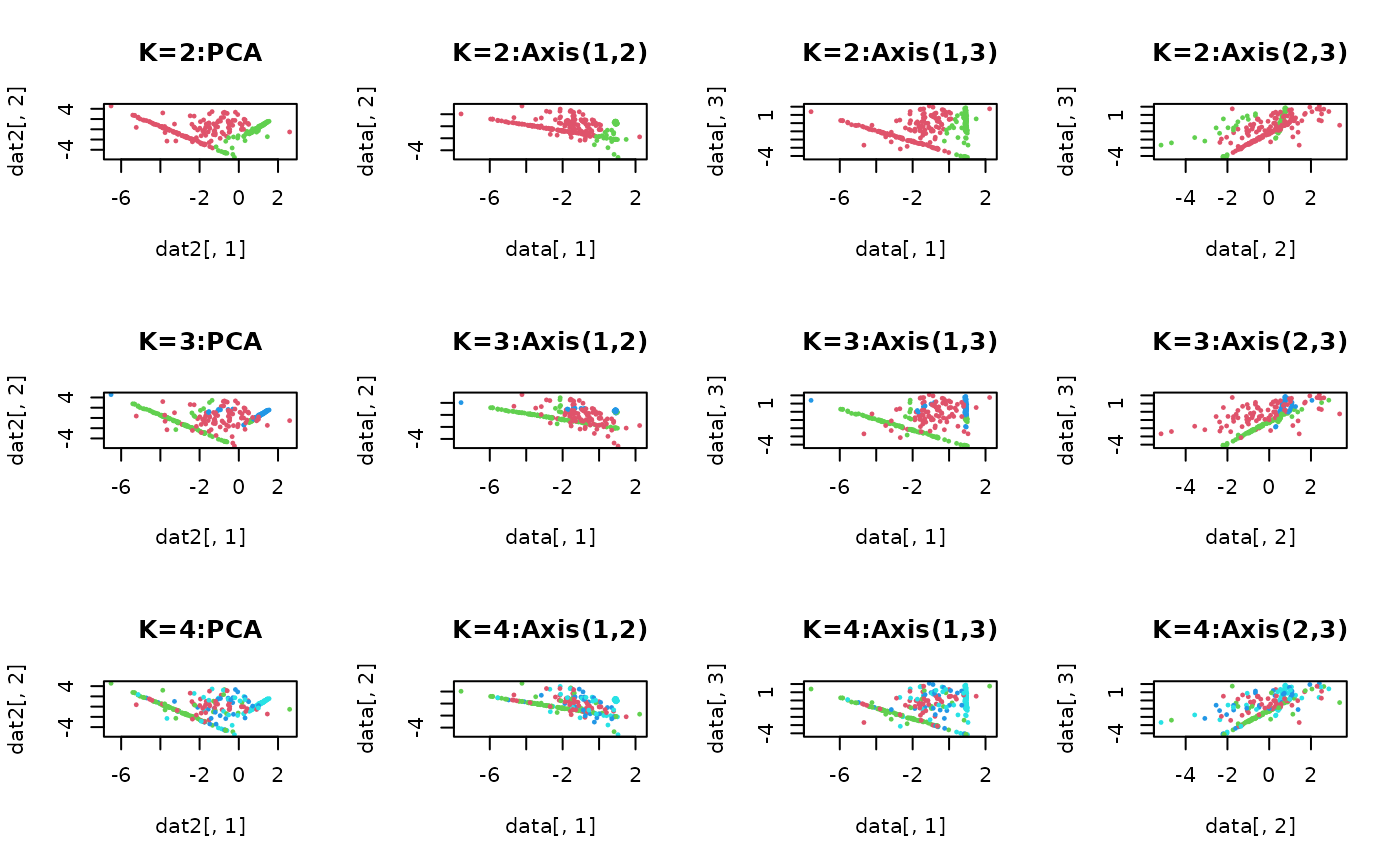MSM is a Bayesian model inferring mixtures of subspaces that are of possibly different dimensions.
For simplicity, this function returns only a handful of information that are most important in
representing the mixture model, including projection, location, and hard assignment parameters.
MSM(data, k = 2, ...)
Arguments
| data | an \((n\times p)\) matrix of row-stacked observations. |
|---|---|
| k | the number of mixtures. |
| ... | extra parameters including
|
Value
a list whose elements are S3 class "MSM" instances, which are also lists of following elements:
- P
length-
klist of projection matrices.- U
length-
klist of orthonormal basis.- theta
length-
klist of center locations of each mixture.- cluster
length-
nvector of cluster label.
Examples
# \donttest{ ## generate a toy example set.seed(10) tester = genLP(n=100, nl=2, np=1, iso.var=0.1) data = tester$data label = tester$class ## do PCA for data reduction proj = base::eigen(stats::cov(data))$vectors[,1:2] dat2 = data%*%proj ## run MSM algorithm with k=2, 3, and 4 maxiter = 500 output2 = MSM(data, k=2, iter=maxiter) output3 = MSM(data, k=3, iter=maxiter) output4 = MSM(data, k=4, iter=maxiter) ## extract final clustering information nrec = length(output2) finc2 = output2[[nrec]]$cluster finc3 = output3[[nrec]]$cluster finc4 = output4[[nrec]]$cluster ## visualize opar <- par(no.readonly=TRUE) par(mfrow=c(3,4)) plot(dat2[,1],dat2[,2],pch=19,cex=0.3,col=finc2+1,main="K=2:PCA") plot(data[,1],data[,2],pch=19,cex=0.3,col=finc2+1,main="K=2:Axis(1,2)") plot(data[,1],data[,3],pch=19,cex=0.3,col=finc2+1,main="K=2:Axis(1,3)") plot(data[,2],data[,3],pch=19,cex=0.3,col=finc2+1,main="K=2:Axis(2,3)") plot(dat2[,1],dat2[,2],pch=19,cex=0.3,col=finc3+1,main="K=3:PCA") plot(data[,1],data[,2],pch=19,cex=0.3,col=finc3+1,main="K=3:Axis(1,2)") plot(data[,1],data[,3],pch=19,cex=0.3,col=finc3+1,main="K=3:Axis(1,3)") plot(data[,2],data[,3],pch=19,cex=0.3,col=finc3+1,main="K=3:Axis(2,3)") plot(dat2[,1],dat2[,2],pch=19,cex=0.3,col=finc4+1,main="K=4:PCA") plot(data[,1],data[,2],pch=19,cex=0.3,col=finc4+1,main="K=4:Axis(1,2)") plot(data[,1],data[,3],pch=19,cex=0.3,col=finc4+1,main="K=4:Axis(1,3)") plot(data[,2],data[,3],pch=19,cex=0.3,col=finc4+1,main="K=4:Axis(2,3)")
